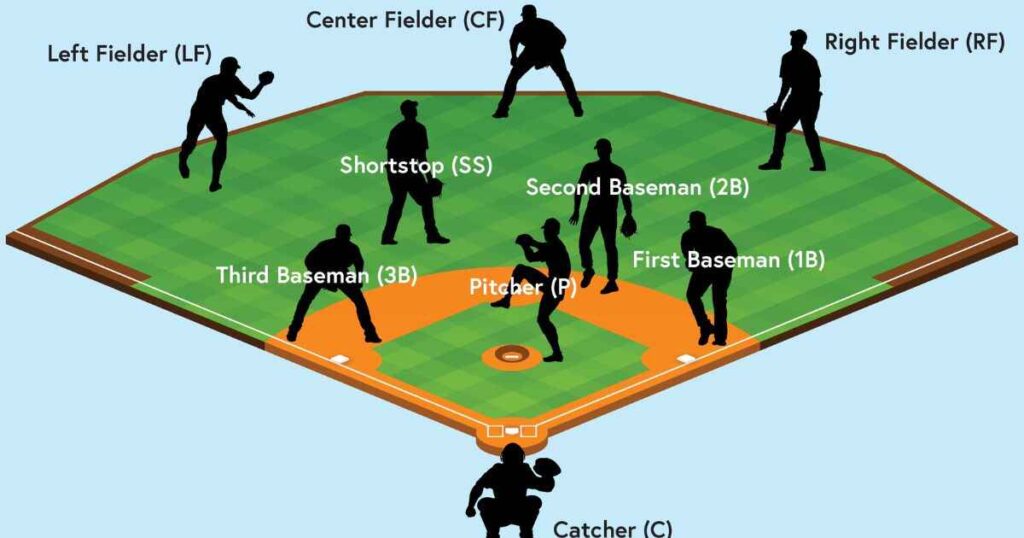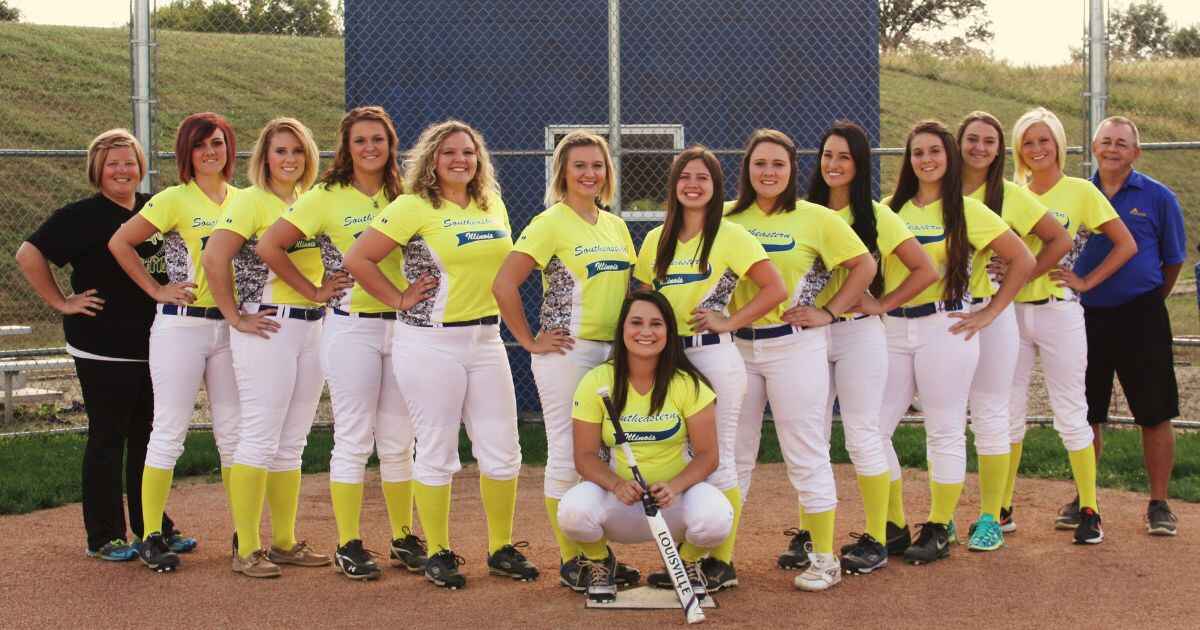A softball team is a group of players, typically ranging from 9 to 15 individuals, who come together to compete in the sport of softball. These players are organized into various positions, such as pitchers, catchers, infielders, and outfielders, to work collectively in both offensive and defensive roles during a softball game.
In the thrilling world of softball, teamwork is at the heart of the game. But have you ever wondered how many players in softball team. It’s a question that can influence strategy, rotation, and the overall dynamics of a match. Let’s dive into the specifics of how many athletes typically make up a softball squad and what roles they play on the field.
A softball team is more than just a collection of individuals; it’s a cohesive unit where each player has a distinct role to ensure success. Knowing the ideal number of players on a softball team is a fundamental aspect of the game, so let’s explore the details together.
Softball position

In the dynamic game of softball, players take up specific positions on the field, each with its unique responsibilities. These positions, like pitcher, catcher, and outfielder, require a combination of agility, precision, and teamwork.
Understanding these positions is key to grasping the intricate dance of strategy and skill that unfolds on the softball field. So, let’s step onto the diamond and explore the world of softball positions.
Pitcher
In the dynamic world of softball, the pitcher holds a pivotal role, quite literally at the heart of the action on the mound. This player is the one who takes the center stage, wielding the ball and directing the game’s tempo.
The pitcher’s primary mission? To deliver pitches that confound the batter and keep the opposition on their toes. With precision, agility, and an array of pitches, the pitcher is both an offensive and defensive powerhouse.
They don’t just hurl the ball; they strategically orchestrate the game, calling the shots and working in harmony with their catcher to outwit their opponents. It’s a position where finesse, control, and strategy take center stage, making the pitcher a captivating and integral part of the softball experience.
Catcher
In the world of softball, the catcher is a position of paramount importance. They are the unsung heroes, the guardians of the home plate, and the strategists behind the plate. Catchers are not just individuals with mitts waiting to collect pitches; they are the field generals, directing the flow of the game, calling plays, and keeping a watchful eye on runners.
The catcher is in constant communication with the pitcher, relaying signals and working in tandem to deceive batters and thwart base stealers. They are the players who can read the game, anticipate moves, and ensure that the opposing team’s attempts to advance are thwarted.
This position demands a unique blend of skills, from agility and quick thinking to durability and mental fortitude. Catchers may not always grab the headlines, but they are the glue that holds the team’s defense together. In a sport like softball, where many consider the game to be softball harder than baseball, their role is undeniably pivotal
First Baseman
When it comes to the game of softball, the first baseman holds a pivotal role that’s essential for the team’s success. Positioned near the first base bag, this player is often a dynamic mix of agility and dexterity. The first baseman needs to be quick on their feet, ready to receive throws, and skilled in tagging the base for crucial outs.
They are not just defensive stalwarts; they’re also key players in making those tricky catches that can turn a game around. Additionally, their offensive abilities add another layer of importance, as they’re expected to be reliable hitters who can get on base and drive in runs.
So, next time you watch a softball game, keep an eye on the first baseman, as they’re often the unsung heroes who make a significant impact on the field.
Second Baseman
The second baseman, often referred to as the “keystone” of the infield, plays a pivotal role in the game of softball. Positioned between first and third base, this player is a linchpin of defensive strategy. With quick reflexes and a keen eye, they cover a significant area, making plays on grounders, line drives, and even pop-ups.
They are a crucial part of the double play equation, seamlessly receiving throws from shortstop or third basemen to initiate these game-changing plays.
On the offensive side, the second baseman is not just about fielding. They are expected to be a contributor with the bat, often placed in key positions in the batting order. Their speed and base-running abilities can also create scoring opportunities, making them a versatile asset.
So, when you see the second baseman pivot on a double play or connect with a base hit, you’re witnessing a player who’s at the heart of the softball action. Their role is a testament to the complexity and dynamism of this beloved sport, where every player, including the second baseman, brings their unique skills to the game.
Third Baseman
In the fast-paced world of softball, the third baseman holds a pivotal role within the infield defense. Positioned at the corner of the diamond, this player is tasked with guarding the area around third base, ready to make critical plays that can change the course of a game.
Third basemen are known for their quick reflexes, strong arms, and the ability to make split-second decisions that often involve high-pressure situations.At the hot corner, as it’s often called, a third baseman’s primary objective is to stop ground balls hit by opposing batters and prevent them from advancing to home plate.
This means fielding the ball cleanly, making accurate throws to first base, and occasionally making lightning-quick tags on runners trying to steal bases. Their role is both demanding and exciting, requiring a mix of defensive prowess, agility, and baseball IQ.
In addition to their defensive duties, third basemen are also expected to contribute offensively. They take their turn at bat in the lineup, striving to deliver hits and drive in runs for their team. This dual role highlights the versatility and importance of a third baseman in the game of softball.
As the action unfolds, keep an eye on the hot corner – the third baseman’s skills and plays can be game-changers, making them a cornerstone of any successful softball team.
Shortstop
The shortstop position in softball is nothing short of remarkable. Often located between second and third base, this player is like the defensive quarterback of the team, poised to make quick decisions and dynamic plays.
With the agility of a sprinter and the reflexes of a cat, the shortstop is responsible for fielding ground balls, covering bases, and turning double plays. They’re the guardian of the infield, preventing ground balls from advancing into the outfield and stopping runners in their tracks.
One of the most exhilarating aspects of being a shortstop is the anticipation of every play. The crack of the bat sends them into motion, making split-second decisions to scoop up the ball and deliver accurate throws to other bases. Their role is akin to the conductor of a defensive orchestra, ensuring all elements harmonize seamlessly.
Left Fielder,Center Fielder and Right Fielder
In the outfield, you’ll find three key positions: the left fielder, the center fielder, and the right fielder. These players are the guardians of the grassy expanse beyond the diamond, and they’re essential to the success of any softball team. Let’s break down their roles and responsibilities.
| Position | Primary Role | Skills and Responsibilities |
| Left Fielder | Backup for third baseman, fields balls, and makes throws | – Speed and agility for tracking down fly balls. – Strong arm for accurate throws to bases. |
| Center Fielder | Covers a wide area in the outfield | – Speed and agility to chase down deep hits. – Communication and leadership in the outfield. |
| Right Fielder | Deters runners from taking extra bases | – Speed and strong arm for effective throws to second or third base. – Potential sun glare challenges. |
This table provides a concise overview of the primary roles and key skills and responsibilities for each outfield position in softball. Each of these outfield positions demands a blend of athleticism, anticipation, and communication, ensuring a well-rounded group of players in the softball team.
FAQs
How many games can be played in a softball?
In softball, a typical game consists of seven innings. Teams can play more games in a single day or over multiple days, depending on tournament schedules and league regulations.
What are the basic skills in playing softball?
The basic skills in playing softball include batting, fielding, pitching, base running, and teamwork. These skills are fundamental for both offensive and defensive aspects of the game.
How many types of pitches are in softball?
In softball, there are several types of pitches, including the fastball, change-up, riseball, drop ball, curveball, and screwball, each with its own unique movement and strategy. Pitchers employ these variations to keep batters guessing and gain an advantage on the field.
Conclusion
In conclusion, the number of players on a softball team typically ranges from 9 to 15, each contributing their skills and teamwork to create an effective and well-rounded squad. Understanding the composition of a softball team is fundamental for both players and fans, as it forms the basis for the game’s strategy and dynamics.








